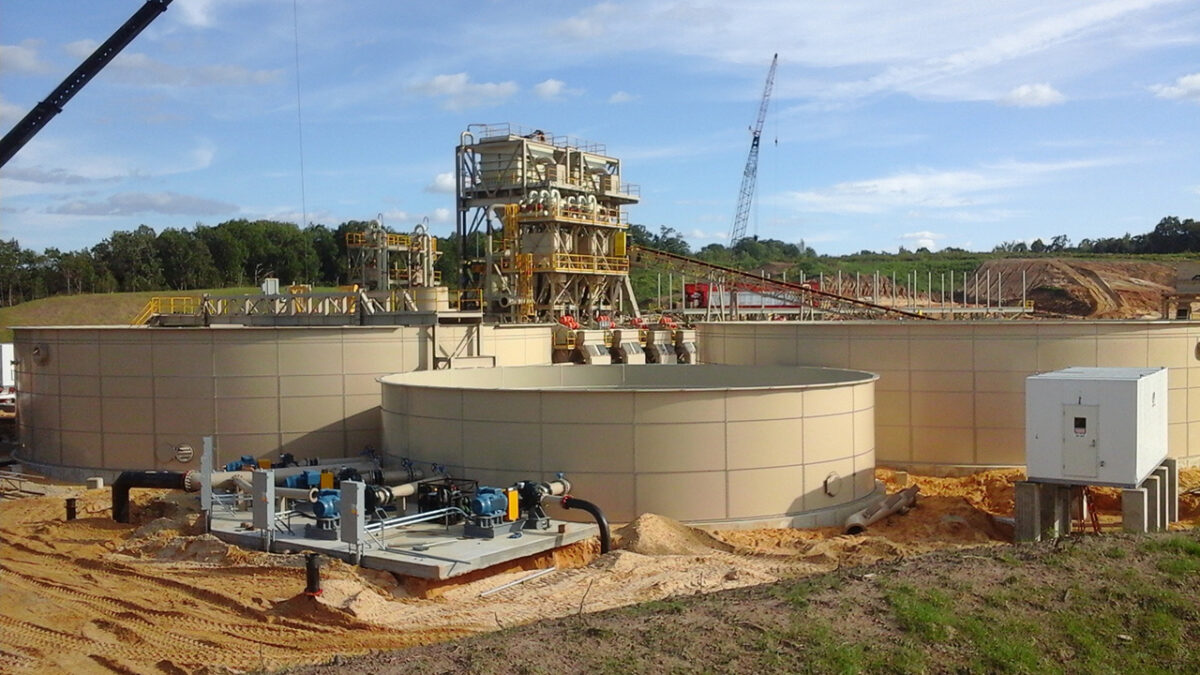How to Choose the Right Water Storage Tank and Where to Put It
The type of water storage tank you choose depends on the needs of your community, and the location depends primarily on the type of tank you choose.
Potable water storage tanks are categorized as ground, standpipe, or elevated.
Ground Storage Tanks
A ground storage tank is aptly named due to the bottom of the cylinder being supported by the ground. Typically, the height of a ground storage tank is the same as the diameter of the cylinder. This type of tank is usually fabricated from concrete or steel.
Ground storage tanks have specific water storage components for equalization and emergency.
Equalization storage is located at the top of the tank and cycles daily to supply water when the demand is higher than the pumping capacity of the water system. Equalization also helps store excess water when the demand is lower.
Emergency storage refers to the water level in the tank that allows for 20PSI or higher. This level of PSI is essential for emergency service and fire flow.
Any water below emergency storage is “dead” storage.
Standpipe Storage
Standpipes are also cylindrical tanks that use the ground as support, but they differ from ground storage in that their height is greater than their diameter. Standpipe tanks can also be designed to blend in with their environment for a more attractive aesthetic.
The standpipe’s taller design allows for gravity-fed pressure, and they’re most beneficial when the system needs less volume or when the ground elevation is higher than the system pressure.
Elevated Water Storage
Elevated tanks allow the natural force of gravity to deliver consistent water pressure. They consist of a tank that holds the water supply and a structure that supports the tank, and the tanks are constructed as fluted column, composite, or spheroid. Most are manufactured in welded steel, while composite tanks are supported by a concrete tower.
An elevated water storage tank is ideal for locations with insufficient ground elevation to accommodate a reservoir tank
***
There are several other factors to consider when choosing a water storage tank. They include the Pump System, Size, and Height.
Pump System
One thing to consider when choosing a water storage tank is the pump system. Storage tanks use either direct or indirect pumping. Direct pumping happens occurs when water is pumped from the tank through a booster pumping system. With indirect pumping, water is pumped from the ground storage tank and then floats it on the system, using gravity for system pressure.
Indirect pumping has some distinct advantages over direct pumping systems:
- Lower peak pump rates
- Reliable water supply and pressure
- Stabilized pressure variations
- Level and balanced pump operations
- Reduced need for a wide range of pump sizes
- Decreased power costs
- Enhanced emergency response when a water main breaks or power fails
- Enhanced pressure response and fire flow
Size
A storage tank is designed to hold enough water to supply a community with one day’s worth of water. If a pump fails, a water storage tank should meet the community’s demand for water until the pump is back in service.
The tank will also play a significant role during a fire. The size of the tank will ultimately affect a community’s insurance rates as well as determine how much water is available for a fire.
Height
The height of a water storage tank determines the amount of water pressure for a community. New systems should have at least 20 PSI at ground level at all points. Normal working pressure is about 60 to 80 PSI and at least 35 PSI.
Make sure you pick a location for your water tank that can accommodate the height you need. The tank’s operational elevation should reach 200 feet from the ground to the overflow of the tank. This will ensure a pressure of 60 to 80 PSI.
The higher the ground elevation, the less height your tank needs to have. You can have a tank that is less than 200 feet from the ground if you have an elevated location for your water tank.
***
Several other factors should be considered when choosing the ideal location for your water storage tank.
Location
In addition to ensuring the ground elevation is high enough for your tank, you should also choose a location where the tank won’t interfere with overhead utility cables.
The tank should be centrally located in the pressure zone of the community or on the far side of the zone. It should also be near the high-capacity water transmission main. If it’s too far from the main, you’ll incur further costs to connect the tank.
Availability and Accessibility
Ideally, your tank should be erected in an underdeveloped area to prevent resistance from property owners. It should provide adequate access for the equipment that will be used to build and maintain the tank.
It’s important to note that your tank location can affect the quality of your water. You want to keep your water fresh by turning over the water in the tower and keeping it from becoming stagnant.
FORGE ahead with choosing the right water storage tank for your community. Contact us to request a quote. Our experienced team will help you decide which water storage tank is best for your needs and will help you determine the ideal location for your tank.






